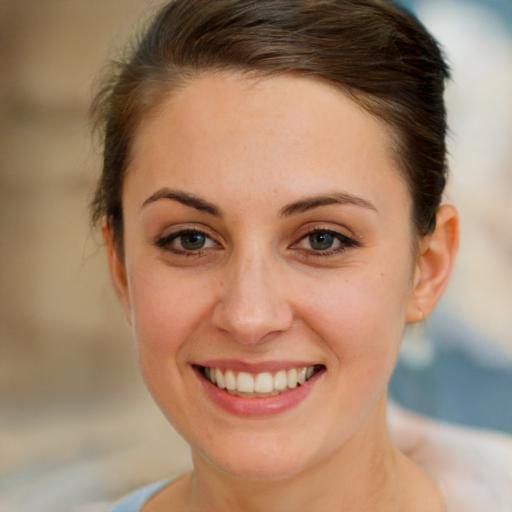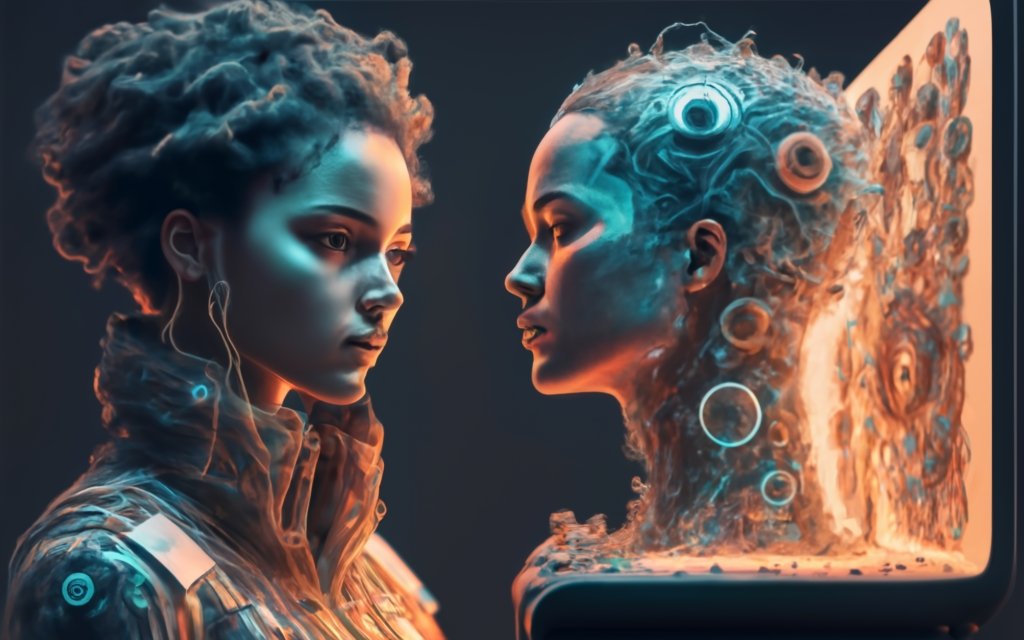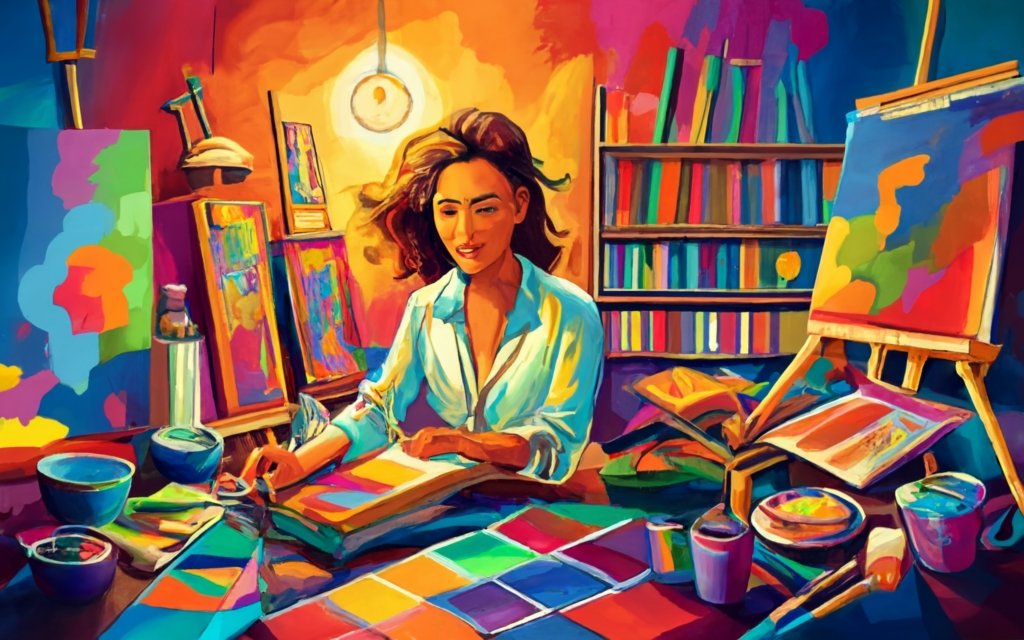The first time I saw an AI-generated portrait sell for $432,500, I laughed. Not because it was funny—because it was terrifying in that way that makes you laugh to keep from screaming.
We’re living through another one of those moments. You know, like when photography “killed” painting in the 1800s. Except this time it’s not just about capturing reality anymore. The machines learned how to dream, and their dreams look suspiciously like art.
Artists are freaking out. And honestly? Some of that panic might be justified.
But here’s what’s interesting—every time technology threatens to make human creativity obsolete, something weird happens instead. The humans get weirder. More human. More… necessary.
The Photography Parallel (History Doesn’t Repeat, But…)
When photography showed up, painters had an existential crisis. Why spend weeks painting a portrait when a camera could capture someone’s likeness in minutes? Realism became pointless overnight.
So what happened? Painters stopped trying to compete with cameras and started doing things cameras couldn’t do. Impressionism. Expressionism. Cubism. All those movements that seem obvious now were desperate pivots away from “making things look real.”
Photography didn’t kill painting. It freed painting from having to be photography.
Now we’ve got AI that can paint better than most humans and photograph things that never existed. The cycle’s happening again, but faster and weirder.
The question isn’t whether AI will replace human artists. The question is what new forms of weirdly human art will emerge when machines can handle all the technical stuff.
What Machines Actually Do (And Don’t Do)
Let’s be clear about what’s happening here. AI doesn’t “create” in any sense humans understand creation. It identifies patterns in existing work and recombines them in statistically probable ways that happen to look new.
That’s not nothing. The results can be stunning, surprising, commercially viable. But it’s not the same thing as a human wrestling with an idea until something emerges that didn’t exist before.
AI can generate a landscape in the style of Van Gogh faster than you can type the prompt. But Van Gogh wasn’t trying to make landscapes that looked like Van Gogh. He was trying to paint the way wheat fields made him feel, the way yellow could carry emotional weight, the way brushstrokes could hold time.
The machine gets the visual result. Misses the entire point.
I’ve been playing with these tools for months now. The novelty wears off fast. Yeah, I can generate a hundred “artworks” in an hour. But after the first dozen, I start to see the underlying patterns, the repetitive solutions, the subtle but persistent sameness.
It’s like having a conversation with someone who’s memorized every interesting thing anyone’s ever said but has never had an original thought.
The New Role of Technical Skill
This is where it gets complicated for artists who built their careers on technical mastery.
If AI can render photorealistic portraits, what’s the value of spending years learning to do the same thing by hand? If it can generate concept art for movies faster than human artists can sketch thumbnails, why hire humans?
Some technical skills are becoming obsolete. Others are becoming more valuable than ever.
The obsolete ones: anything that’s primarily about accuracy, speed, or following established visual conventions. AI is better at all of that.
The valuable ones: anything that involves genuine human perspective, cultural understanding, intentional “mistakes,” or pushing techniques into new territory.
Kehinde Wiley’s portrait paintings aren’t valuable because of his technical skill—though he has plenty. They’re valuable because of what he chooses to paint, how he chooses to paint it, and why those choices matter right now in ways they’ve never mattered before.
AI can copy his style. It can’t understand why his subjects are looking directly at you with that particular kind of confidence. Can’t grasp the political implications of putting Black bodies in poses traditionally reserved for European royalty.
The technique serves the concept. Always has, always will.
Photography’s Identity Crisis 2.0
Photography is having an even weirder moment.
For 150 years, photography’s power came from its relationship to reality. “This actually happened. This person existed. This light actually hit this surface at this specific moment.”
Now AI can generate photographs of people who never lived in places that don’t exist doing things that never happened. The images are indistinguishable from “real” photographs.
So what makes a photograph valuable now? What makes it art rather than just another generated image?
Some photographers are doubling down on authenticity. Analog processes, film grain, things that prove human hands were involved. Others are embracing the new possibilities—using AI as another tool in the darkroom, blending reality with generated elements.
The most interesting ones are doing something else entirely. They’re making photographs that are obviously, aggressively human. Images that could only come from someone who lived in a body, experienced time, made specific choices about where to stand and when to click.
Vivian Maier’s street photography isn’t great because of her technical skill. It’s great because of her eye for moments that reveal something essential about being human in specific places at specific times. No AI prompt could have generated those images because no AI has lived Vivian Maier’s life.
The Prompt Is the New Brush
For artists who do work with AI, the skill isn’t in the generating—it’s in the directing.
Writing effective prompts is becoming an art form. Knowing which models to use for which effects. Understanding how to combine outputs from multiple AIs. How to iterate and refine and guide the machine toward something that serves your vision rather than its statistical preferences.
Some of the most interesting AI art comes from artists who treat the technology as a very smart, very fast intern. They’ll generate hundreds of options, then select, combine, edit, and refine until something emerges that they couldn’t have made by hand but also couldn’t have gotten from a simple prompt.
The AI does the technical heavy lifting. The human does the curation, the editing, the vision, the context.
It’s collaboration, not replacement. Though the collaborator happens to be a machine that never sleeps and has access to every image ever uploaded to the internet.
The Authenticity Premium
Here’s something I didn’t see coming: AI art is making handmade work more valuable, not less.
When everything can be generated instantly, things that require time and human skill start feeling precious again. When perfect technique is available to anyone with a laptop, imperfect technique that reveals personality becomes rare.
I know painters who are busier than ever. Not despite AI, but because of it. Their clients want something no machine could make—something with intentional flaws, personal quirks, the specific gravity that comes from human hands pushing paint around for hours.
Same thing happened with music. When digital production made everything possible, analog recording equipment became expensive and sought-after again. The limitations became features.
Artists are starting to emphasize the parts of their process that AI can’t replicate. The physical materials. The time investment. The visible evidence of human decision-making.
New Forms, New Questions
The really exciting stuff is happening at the edges. Artists who aren’t trying to compete with AI or ignore it, but who are using it to do things that weren’t possible before.
Interactive installations that generate visuals in real-time based on audience movement. Paintings that exist only digitally but reference physical brushwork techniques. Photographs that blend multiple realities so seamlessly you can’t tell where documentation ends and imagination begins.
The tools are opening up possibilities we’re only beginning to understand. But the most powerful applications aren’t replacing human creativity—they’re amplifying it, extending it, making it stranger and more personal.
The Question of Authorship
Who’s the artist when AI generates the image? The person who wrote the prompt? The programmers who trained the model? The thousands of artists whose work was used as training data without permission?
Legal battles are already happening. Copyright claims, rights management, questions about fair use that existing law isn’t equipped to handle.
But maybe that’s the wrong question. Maybe authorship has always been more complicated than we pretended. Every artist builds on techniques developed by others, references visual languages they didn’t invent, works within cultural contexts that shaped their aesthetic sense.
The difference now is that the influences are algorithmic rather than just cultural. The borrowing is automated rather than just intuitive.
The art world will adapt. It always has. New categories will emerge, new ways of understanding what makes something valuable, new appreciation for whatever remains essentially human.
What Remains Human
I keep coming back to this: what can humans do that machines can’t?
Make mistakes that improve the work. Bring lived experience to abstract problems. Understand cultural context in ways that go deeper than pattern recognition. Choose what not to do as intentionally as what to do.
Feel genuine emotion about the work, not just simulate the appearance of emotion.
The machines are getting better at simulating human creativity. But simulation isn’t the same thing as experience. A generated painting might look exactly like something a human would paint, but it doesn’t carry the weight of human struggle, human joy, human confusion.
Maybe that weight is what we’re really buying when we buy art. Not just the visual result, but the story of someone wrestling with materials and ideas until something new emerged.
The story of someone who cared enough to spend their life learning how to see differently, then showing the rest of us what they found.
That’s still ours. For now.
The bots can copy our techniques. They can’t live our lives.

Jaida Hauschildt is a contemporary artist known for her captivating and thought-provoking works of art. With a background in fine arts and a passion for exploring the intersection of traditional and modern artistic techniques, Jaida brings a unique perspective to visual art.




